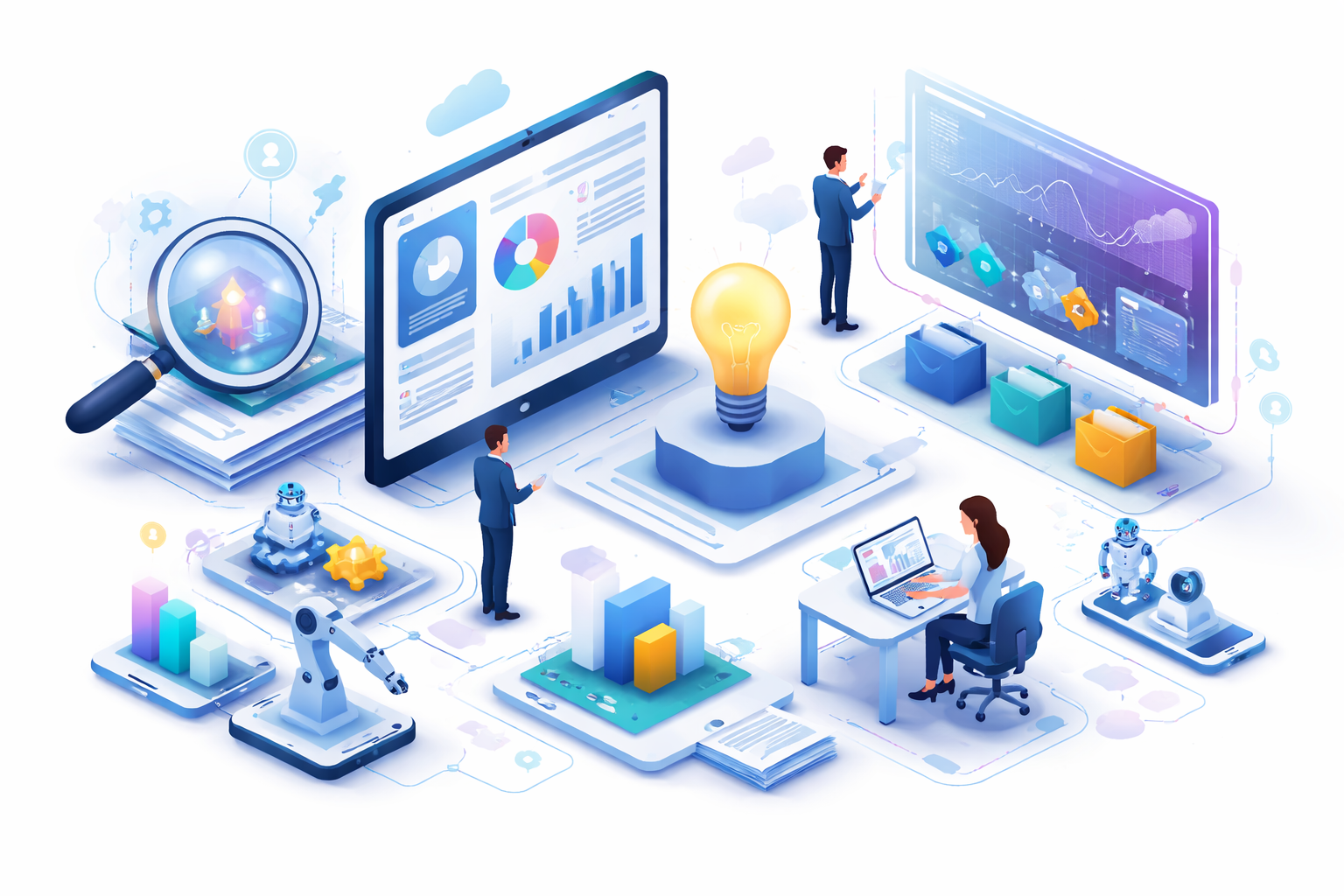Understanding ISO 56000: The Innovation Management Standard
Innovation is the lifeblood of modern businesses, driving growth, competitiveness, and long-term success. To help organizations harness the power of innovation effectively, the International Organization for Standardization (ISO) introduced the ISO 56000 series, a set of standards dedicated to innovation management. This blog post explores what ISO 56000 is, its key features, benefits, and how innovation teams can leverage it to institutionalize good innovation practices.
What is ISO 56000?
ISO 56000 is a family of standards providing guidelines and a framework for managing innovation within organizations. It aims to standardize the terminology, tools, processes, and metrics associated with innovation management, ensuring that organizations can systematically and efficiently foster and manage innovation.
The ISO 56000 series includes several standards, each focusing on different aspects of innovation management:
- ISO 56000: Fundamentals and vocabulary
- ISO 56002: Innovation management system — Guidance
- ISO 56003: Tools and methods for innovation partnership
- ISO 56004: Assessment of innovation management
- ISO 56005: Intellectual property management
- ISO 56006: Strategic intelligence management
- ISO 56007: Idea management
- ISO 56008: Measurement of innovation operations
Detailed Overview of ISO 56000 Standards
ISO 56000: Fundamentals and Vocabulary
Purpose: ISO 56000 establishes the fundamental principles and vocabulary related to innovation management.
Key Features:
- Provides a common language for innovation management.
- Defines key terms and concepts to ensure clarity and consistency.
- Sets the foundation for understanding and implementing other standards in the ISO 56000 series.
Benefits:
- Eliminates confusion and miscommunication.
- Ensures all stakeholders have a shared understanding of innovation-related terms.
ISO 56002: Innovation Management System — Guidance
Purpose: ISO 56002 offers guidance on establishing, implementing, maintaining, and continually improving an innovation management system.
Key Features:
- Describes the components of an effective innovation management system.
- Provides a framework for managing innovation activities.
- Emphasizes the importance of leadership, strategy, and culture in innovation.
Benefits:
- Helps organizations build a structured approach to innovation.
- Ensures innovation efforts are aligned with organizational goals.
ISO 56003: Tools and Methods for Innovation Partnership
Purpose: ISO 56003 provides guidance on tools and methods for engaging in and managing innovation partnerships.
Key Features:
- Outlines best practices for forming and managing innovation partnerships.
- Covers aspects such as partner selection, collaboration models, and joint value creation.
- Includes tools for assessing partnership potential and performance.
Benefits:
- Enhances collaboration with external partners.
- Maximizes the value derived from innovation partnerships.
ISO 56004: Assessment of Innovation Management
Purpose: ISO 56004 offers guidance on assessing the performance of an organization's innovation management system.
Key Features:
- Describes methodologies for evaluating innovation processes and outcomes.
- Provides criteria for assessing the maturity of innovation management practices.
- Includes tools for conducting internal and external assessments.
Benefits:
- Identifies strengths and areas for improvement.
- Supports continuous improvement of innovation management practices.
ISO 56005: Intellectual Property Management
Purpose: ISO 56005 provides guidelines for managing intellectual property (IP) in the context of innovation.
Key Features:
- Covers the identification, protection, and exploitation of IP.
- Describes strategies for managing IP risks and opportunities.
- Provides tools for integrating IP management into the innovation process.
Benefits:
- Protects valuable intellectual assets.
- Enhances the competitive advantage derived from innovation.
ISO 56006: Strategic Intelligence Management
Purpose: ISO 56006 offers guidance on managing strategic intelligence to support innovation.
Key Features:
- Describes processes for gathering, analyzing, and using strategic intelligence.
- Emphasizes the importance of understanding external trends and market dynamics.
- Provides tools for integrating strategic intelligence into innovation decision-making.
Benefits:
- Informs strategic innovation decisions.
- Helps organizations anticipate and respond to external changes.
ISO 56007: Idea Management
Purpose: ISO 56007 provides guidelines for managing the flow of ideas within an organization.
Key Features:
- Describes processes for idea generation, evaluation, and implementation.
- Emphasizes the importance of a supportive culture and leadership.
- Provides tools for capturing, prioritizing, and developing ideas.
Benefits:
- Enhances the quality and quantity of ideas.
- Ensures the best ideas are effectively implemented.
ISO 56008: Measurement of Innovation Operations
Purpose: ISO 56008 offers guidance on measuring the performance and impact of innovation activities.
Key Features:
- Describes metrics for evaluating innovation processes, outputs, and outcomes.
- Provides methodologies for collecting and analyzing innovation data.
- Emphasizes the importance of using measurement results to drive improvement.
Benefits:
- Enables data-driven decision-making.
- Tracks progress and demonstrates the value of innovation.
Six Key Overall Benefits of ISO 56000
- Enhanced Innovation CapabilityImplementing ISO 56000 helps organizations build robust innovation capabilities, enabling them to generate, develop, and implement new ideas effectively.
- Improved Efficiency and EffectivenessStandardized processes and best practices reduce inefficiencies and enhance the effectiveness of innovation activities, leading to faster and more successful innovation outcomes.
- Increased Credibility and TrustAdhering to internationally recognized standards enhances the credibility of an organization’s innovation efforts, building trust with stakeholders, partners, and customers.
- Better Risk ManagementISO 56000 provides guidelines for identifying and mitigating risks associated with innovation, helping organizations manage uncertainty and increase the likelihood of success.
- Alignment with Strategic GoalsThe standard ensures that innovation activities are aligned with the organization’s strategic objectives, maximizing the impact of innovation on business success.
- Enhanced CollaborationStandardized terminology and processes facilitate better communication and collaboration among teams, departments, and external partners.
Seven Ways Innovation Teams Use ISO 56000
- Establishing a Structured Innovation Process: Innovation teams use ISO 56000 to create a structured process for managing innovation, from idea generation to implementation. This includes defining clear stages, roles, and responsibilities, as well as setting up mechanisms for tracking progress and measuring success.
- Standardizing Innovation Practices: By following the guidelines outlined in ISO 56000, innovation teams can standardize their practices, ensuring consistency and quality across all innovation activities. This includes using common tools, methods, and metrics.
- Facilitating Training and Development: Innovation teams leverage ISO 56000 to design training programs that build innovation capabilities within the organization. The standard provides a foundation for educating employees about best practices and the importance of innovation.
- Conducting Innovation Assessments: ISO 56004 includes tools for assessing the effectiveness of innovation management systems. Innovation teams use these tools to conduct regular assessments, identify strengths and weaknesses, and implement improvements.
- Enhancing Collaboration with Partners: For organizations that collaborate with external partners, ISO 56003 provides guidelines for managing innovation partnerships effectively. This includes setting up clear agreements, defining roles, and establishing communication protocols.
- Aligning with Organizational Strategy: Innovation teams ensure that their activities align with the organization’s strategic goals by using the frameworks and guidelines provided by ISO 56000. This alignment ensures that innovation efforts contribute to the overall vision and objectives of the organization.
- Managing Intellectual Property: ISO 56005 offers specific guidance on managing intellectual property (IP). Innovation teams use this to protect and leverage IP generated through innovation activities, ensuring it contributes to competitive advantage.
Conclusion
ISO 56000 is a powerful tool for organizations looking to institutionalize good innovation practices and enhance their innovation management capabilities. By providing a standardized framework and best practices, ISO 56000 helps organizations manage innovation systematically, improve efficiency, and achieve better outcomes. Innovation teams can leverage these standards to create structured processes, enhance collaboration, and align innovation efforts with strategic goals, ultimately driving long-term success and competitiveness.
Implementing ISO 56000 is not just about compliance; it’s about fostering a culture of innovation and continuous improvement that empowers organizations to thrive in today’s dynamic and competitive landscape.
The Benefits of a Powerful Innovation Management Platform
By leveraging Traction Technology, your innovation team can:
Increase Efficiency
Stop wasting time digging through data. Real-time insights allow you to focus on what matters most – driving innovation forward.
Improve Decision-Making
Make data-driven decisions that have a real impact on your innovation initiatives.
Enhance Collaboration
Foster transparency and communication within your team and with stakeholders.
Faster Time to Market
Identify opportunities and bottlenecks early on, accelerating your innovation process.
Measurable Success
Track your progress and demonstrate the tangible impact of your innovation efforts.
Stop being a passenger in your innovation journey. Take the wheel with Traction Technology's real-time dashboards and actionable KPIs. Get a free trial today and see how data can become your innovation engine!
Here's how Traction Technology can help:
.png)
Discovery of Relevant Startups: Traction Technology helps established companies discover relevant advanced technologies aligned with their strategic goals and innovation areas. It curates startups based on different industries, technology trends, and areas of business interest, making it easier to find potential partners or investment opportunities and share this information across the enterprise.
Collaboration and Engagement Tools: Traction Technology offers tools that help manage the engagement process with startups. It provides a structured approach to evaluating, tracking, and managing interactions with multiple startups across multiple project and pilots, improving efficiency and collaboration.
Data-Driven Insights: The platform provides data-driven insights to help make informed decisions. This includes information on startup funding, growth indicators, customers and competitors, which can help in assessing potential startup partnerships.
Innovation Pipeline Management: Traction Technology aids in managing the innovation pipeline. It helps companies capture ideas and request and track innovation projects, monitor progress, and measure results in real time, promoting a culture of continuous innovation.
Track KPIs and Generate Custom Reports: Effortlessly track Key Performance Indicators (KPIs) with real time dashboards and generate custom reports tailored to your organization's unique requirements. Stay
.png)
ahead of the curve by monitoring projects progress and engagement.
By leveraging a platform like Traction Technology, established companies can gain a competitive edge, driving their digital transformation journey and adapting to the fast-paced business environment. It supports the integration of startup agility, innovation, and customer-centric approach into their operations, which is critical for success in the digital age.
About Traction Technology
We built Traction Technology to meet the needs of the most demanding customers, empowering individuals and teams to accelerate and help automate the discovery and evaluation of emerging technologies. Traction Technology speeds up the time to innovation at large enterprises, saving valuable time and money by accelerating revenue-producing digital transformation projects and reducing the strain on internal resources, while significantly mitigating the risk inherent in working with early-stage technologies.
Let us share some case studies and see if there is a fit based on your needs.
Traction Report Update: 24 Startups to Watch In 2024
For more information
● Explore our software and research services.
● Download our brochure: How to Evaluate Enterprise Startups.
● Watch a demo of our innovation management platform and start your free trial.









.webp)